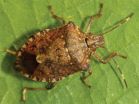(Press-News.org) Would you like your glass of water with a little iron it? Or do you prefer a copper taste? Possibly manganese? Did you realize that there are more than two dozen flavors to water, not all of which are as yummy as say, rocky road ice cream?
For several decades Andrea Dietrich, who trains utility staff and managers around the U.S. and across the globe on how to use sensory analysis to detect changes in water quality, has worked in the area of assessing taste, odor, and visual perception of chemical elements in water. Dietrich, a professor of civil and environmental engineering at Virginia Tech, has received numerous grants in this area, including one from the National Science Foundation. This $1.6 million contract asked her to investigate connections between corrosion of home plumbing materials, tastes-and-odors in drinking water, economics, and consumer health concerns.
For her research efforts, Dietrich has registered a number of firsts with journal papers reflecting her work on such diverse topics as: improving cancer therapy through odor and taste intervention; prevention and treatment of obesity by drinking more water; health effects of iron and copper in drinking water; and risks to people over 50 for unhealthy over-exposure to iron in water.
So when Amanda Sain of Concord, North Carolina, arrived as an environmental engineering graduate student at Virginia Tech, and she started reaching out to faculty, she found the public health element of Dietrich's work fascinating. In turn, Dietrich was able to secure funding for Sain's studies, using resources from the Institute for Critical Technology and Applied Science(ICTAS) and the Water INTERface Laboratory at the Blacksburg, Virginia University.
Sain's main project with Dietrich has focused primarily on a specific aspect of human health ¬– what is the impact of exposure to manganese in water and air. According to the Environmental Protection Agency, manganese is naturally ubiquitous in the environment, and exposure to low levels in one's diet is nutritionally essential. However, chronic exposure to high levels of manganese by inhalation in humans may result in central nervous systems effects. Children have exhibited some negative neurological impacts correlated with ingestion of manganese.
The EPA does allow a certain level of manganese in drinking water. To consumers, the permitted 0.05 milligrams per liter might seem non-existent. And interestingly, this amount is mostly for "aesthetic" reasons, Sain noted. This contaminant level was set, reportedly "based on bitter metallic taste, black-brown particles in water, and undesirable black or brown color of fixtures and laundry." But, in actuality, there is not a bitter metallic taste for manganese at that level, Sain and Dietrich revealed in a peer-reviewed journal paper, "Assessing taste and visual perception of Mn (II) and Mn (IV)." Undergraduate researcher Ashley Griffin of Franklin, Tennessee also contributed to the article that appeared in the January 2014 issue of the Journal of the American Water Works Association.
Mineral content in drinking water "is acknowledged to be the major chemical factor affecting taste and likeability of drinking water when no off-flavors are present," Sain and Dietrich wrote. But the problems occur when a mineral such as manganese is not detected by the human senses. They estimated that 50 percent of the population taste threshold for manganese II, the simplest ionic manganese oxide, to be more than 1000 times the current EPA allowable level. As it is "visually undetectable in drinking water, even at concentrations much greater than those typically found in groundwater…it could lead to ingestion of water with high manganese II concentrations."
With their findings, Sain and her adviser wondered about doubled contamination – water and air. They posed the question of what happens when one inhales a drinking water that is contaminated with manganese. Suppose the contaminated water is used to operate humidifiers in residential homes. The contaminants theoretically could be more than just the manganese, but they focused on this mineral as a starting point.
If the problem in the drinking water goes undetected, and then it is released into the air via the use of humidifiers, is it indeed a threat? If so, their findings could lead to "informed recommendations for the safe use of humidifiers and open the door to looking at water safety not only in the glass, but in the air as well," Sain said.
In the early part of 2014, Sain played an investigative role when the National Science Foundation awarded Dietrich a Rapid Response Grant to determine the overall effect of a chemical spill into the Elk River in West Virginia. In that study, they found that the nature of the chemicals that were released into the water subsequently became a problem with the air quality in nearby residents' homes.
INFORMATION: END
So... do you know what is in your water?
Did you realize that there are more than 2 dozen flavors to water, not all of which are as yummy as say, rocky road ice cream?
2014-09-03
ELSE PRESS RELEASES FROM THIS DATE:
Study finds wide gap in compensation from '07 South Korean oil spill
2014-09-03
Although nearly eight years have passed since a major oil spill in South Korea, compensation and recovery efforts appear to be far from satisfactory, and the affected communities continue to suffer the effects of the disaster.
UT Dallas' Dr. Dohyeong Kim, second-year doctoral student Soojin Min and two Korean scholars have found a considerable gap between the economic loss claimed by residents and the compensation they received after the Hebei Spirit oil spill. Only 11 percent of the claims were approved for compensation.
"I was surprised," said Kim, the lead author ...
For kids with both asthma and obesity, which came first?
2014-09-03
ARLINGTON HEIGHTS, Ill. (September 3, 2014) – For years, doctors have known that there is a link between childhood obesity and asthma, but have found it difficult to determine which condition tends to come first, or whether one causes the other.
An article published in the September issue of Annals of Allergy, Asthma and Immunology, the scientific publication of the American College of Allergy, Asthma and Immunology (ACAAI), suggests it is more probable that childhood obesity contributes to asthma, although the connection is complex and has many factors.
"The relationship ...
You may have to watch what your fruits and veggies eat
2014-09-03
ARLINGTON HEIGHTS, Ill. (September 3, 2014) – People with food allergies always have to watch what they eat. Now, they may have to watch what their fruits and vegetables eat, as it seems it's possible to have an allergic reaction to antibiotic residues in food.
An article published in the September issue of Annals of Allergy, Asthma and Immunology, the scientific publication of the American College of Allergy, Asthma and Immunology (ACAAI), examines the case of a 10 year-old girl who had an anaphylactic (severely allergic) reaction after eating blueberry pie. Although ...
Brown marmorated stink bug biology and management options described in open-access article
2014-09-03
The brown marmorated stink bug (Halyomorpha halys) is an invasive, herbivorous insect species that was accidentally introduced to the United States from Asia. First discovered in Allentown, Pennsylvania in 1996, it has since been found in at least 40 states in the U.S. as well as Canada, Switzerland, France, Germany, Italy, and Lichtenstein.
In North America, it has become a major agricultural pest across a wide range of commodities. The insect is capable of eating more than 100 different plant species, and in 2010 it caused $37 million worth of damage to apples alone.
Now ...
Cosmic forecast: Dark clouds will give way to sunshine
2014-09-03
Lupus 4 is located about 400 light-years away from Earth, straddling the constellations of Lupus (The Wolf) and Norma (The Carpenter's Square). The cloud is one of several affiliated dark clouds found in a loose star cluster called the Scorpius–Centaurus OB association. An OB association is a relatively young, yet widely dispersed grouping of stars [1]. The stars likely had a common origin in a gigantic cloud of material.
Because the association, and its Lupus clouds, form the closest such grouping to the Sun, they are a prime target for studying how stars grow up together ...
Scientists discover how to 'switch off' autoimmune diseases
2014-09-03
Scientists have made an important breakthrough in the fight against debilitating autoimmune diseases such as multiple sclerosis by revealing how to stop cells attacking healthy body tissue.
Rather than the body's immune system destroying its own tissue by mistake, researchers at the University of Bristol have discovered how cells convert from being aggressive to actually protecting against disease.
The study, funded by the Wellcome Trust, is published today [03 September] in Nature Communications.
It's hoped this latest insight will lead to the widespread use of antigen-specific ...
Unplanned births out-of-hospital increases risk of infant mortality
2014-09-03
New research reveals that unplanned births out-of-hospital in Norway are associated with higher infant mortality. The findings published in Acta Obstetricia et Gynecologica Scandinavica, a journal of the Nordic Federation of Societies of Obstetrics and Gynecology, indicate that young women who have given birth at least once before (multiparous) and those living in remote areas are more likely to have unplanned deliveries, which may increase the risk of death in newborns.
In 2013, close to 60,000 babies were born in Norway according to the Statistics Norway. The country ...
Around 1 in 10 UK women has dry eye disease, requiring artificial tears
2014-09-03
The symptoms of dry eye disease include the sensation of grit in the eye, frequently accompanied by itching, burning and visual disturbance. The causes are poorly understood.
The researchers base their findings on almost 4000 women aged 20 to 87 (average age 57) from the TwinsUK cohort, drawn from the registry held at St Thomas' Hospital in London.
This cohort is widely regarded as representative of the UK general population, and has been used to look at a wide range of diseases and genetic traits over the years.
The prevalence of dry eye disease, and the frequency and ...
Stillbirth gap closing between indigenous and non-indigenous women, shows Australian study
2014-09-03
The gap in stillbirth rates between indigenous and non-indigenous women in Queensland, Australia, is closing, however indigenous women are still at risk of stillbirth due to preventable causes, find researchers in a new study published today (3 September) in BJOG: An International Journal of Obstetrics and Gynaecology (BJOG).
The Australian study used data from the Queensland Perinatal Data Collection and looked at 881,211 singleton births from 1995 to 2011. It aimed to assess the differences in stillbirth rates over time among indigenous (Australian Aboriginal and Torres ...
Estrogen increases cannabis sensitivity
2014-09-03
PULLMAN, Wash. - Smoking today's concentrated pot might be risky business for women, according to new research from Washington State University. The study is the first to demonstrate sex differences in the development of tolerance to THC.
Psychology professor Rebecca Craft showed that, thanks to their estrogen levels, female rats are at least 30 percent more sensitive than males to the pain-relieving qualities of THC—the key active ingredient in cannabis. Females also develop tolerance to THC more quickly. These sensitivities could increase vulnerability to negative ...
LAST 30 PRESS RELEASES:
Tracing the quick synthesis of an industrially important catalyst
New software sheds light on cancer’s hidden genetic networks
UT Health San Antonio awarded $3 million in CPRIT grants to bolster cancer research and prevention efforts in South Texas
Third symposium spotlights global challenge of new contaminants in China’s fight against pollution
From straw to soil harmony: International team reveals how biochar supercharges carbon-smart farming
Myeloma: How AI is redrawing the map of cancer care
Manhattan E. Charurat, Ph.D., MHS invested as the Homer and Martha Gudelsky Distinguished Professor in Medicine at the University of Maryland School of Medicine
Insilico Medicine’s Pharma.AI Q4 Winter Launch Recap: Revolutionizing drug discovery with cutting-edge AI innovations, accelerating the path to pharmaceutical superintelligence
Nanoplastics have diet-dependent impacts on digestive system health
Brain neuron death occurs throughout life and increases with age, a natural human protein drug may halt neuron death in Alzheimer’s disease
SPIE and CLP announce the recipients of the 2025 Advanced Photonics Young Innovator Award
Lessons from the Caldor Fire’s Christmas Valley ‘Miracle’
Ant societies rose by trading individual protection for collective power
Research reveals how ancient viral DNA shapes early embryonic development
A molecular gatekeeper that controls protein synthesis
New ‘cloaking device’ concept to shield sensitive tech from magnetic fields
Researchers show impact of mountain building and climate change on alpine biodiversity
Study models the transition from Neanderthals to modern humans in Europe
University of Phoenix College of Doctoral Studies releases white paper on AI-driven skilling to reduce burnout and restore worker autonomy
AIs fail at the game of visual “telephone”
The levers for a sustainable food system
Potential changes in US homelessness by ending federal support for housing first programs
Vulnerability of large language models to prompt injection when providing medical advice
Researchers develop new system for high-energy-density, long-life, multi-electron transfer bromine-based flow batteries
Ending federal support for housing first programs could increase U.S. homelessness by 5% in one year, new JAMA study finds
New research uncovers molecular ‘safety switch’ shielding cancers from immune attack
Bacteria resisting viral infection can still sink carbon to ocean floor
Younger biological age may increase depression risk in older women during COVID-19
Bharat Innovates 2026 National Basecamp Showcases India’s Most Promising Deep-Tech Ventures
Here’s what determines whether your income level rises or falls
[Press-News.org] So... do you know what is in your water?Did you realize that there are more than 2 dozen flavors to water, not all of which are as yummy as say, rocky road ice cream?






